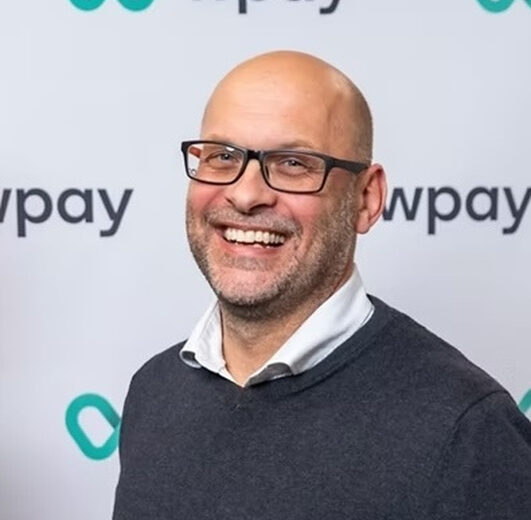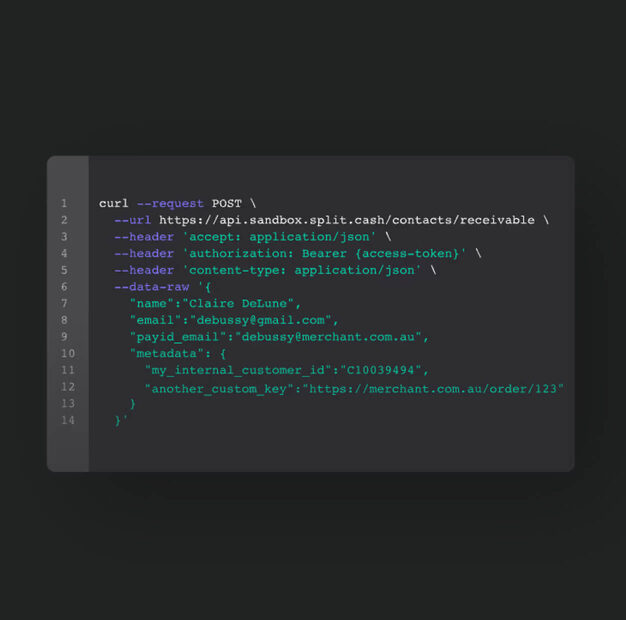PayTo A Real-Time
Payments Revolution
PayTo is a modern way for businesses to collect payments from their customers’ bank accounts and have them settle in real time, all the time—like an always-on, instant direct debit.
As a real-time alternative, PayTo delivers the set-and-forget benefits of direct debits and cards with a decreased risk of missed payments and fraud.
Simply revolutionary
Customer account details are verified in real time, consent for your withdrawals is pre-established, collections and settlement happen in real time, and are always-on too.
That means no more T+2 day processing times or only-on-business-days business blockers. It represents a new payments paradigm for future-ready businesses.
Zepto is your direct connection to this real-time payments revolution. PayTo is a registered trademark of NPP Australia Limited.
Recurring Payments
PayTo’s real-time account validation and notifications at various stages of every payment remove the uncertainty of traditional direct debit.
One-off Payments
PayTo’s real-time account validation and notifications at various stages of every payment remove the uncertainty of traditional direct debit.
A real-time payments
game changer
Payto benefits
Trust, Transparency & Consent
We believe that great customer experience is everything.
Designed for digital experience, PayTo's pre-authorised payments move seamlessly with trust and consent between customer and merchant bank accounts in real time.
PayTo is fundamentally changing the way merchants and customers connect, engage and transact.
Business Benefits
- Increase successful payment collection as everything is automated, verified, customer pre-authorised and moves in real-time.
- Real-time notifications confirm whether the payment was settled or failed with granular reason codes [e.g. AM04 - The specified Payer Customer Account has insufficient funds].
- No more paper agreements, drastically reduce back-office admin and reconciliation busywork.
- The superior customer experience of seamless payments without having to leave the merchant’s digital environment.
- Visibility when a customer pauses, changes or cancels a PayTo agreement, providing the insight needed to engage timely and maximise payment success.
Customer Benefits
- More choice by enabling real-time bill payments and purchases directly from their bank account.
- Use PayID in a PayTo agreement, so personal info and account details stay completely private.
- A fully digital sign-up experience enables seamless payment set-up on the spot.
- Approve and manage PayTo agreements from within the security of their existing ine or mobile banking app, reducing the risk of fraud.
- Full control to set up, pause or cancel a PayTo agreement as desired.

“At Wpay we continue to look for payment solutions that provide customers choice and help make their lives easier. With their Direct Connection to the NPP payment rails, Zepto was the obvious choice for us when looking for a PayTo partner. We are seeing an increased appetite from customers for real-time payments because they offer immediate processing and settlement of transactions, which provides greater convenience and speed compared to traditional payment methods."Paul Monnington Managing Director, Wpay

“At Wpay we continue to look for payment solutions that provide customers choice and help make their lives easier. With their Direct Connection to the NPP payment rails, Zepto was the obvious choice for us when looking for a PayTo partner. We are seeing an increased appetite from customers for real-time payments because they offer immediate processing and settlement of transactions, which provides greater convenience and speed compared to traditional payment methods."Paul Monnington Managing Director, Wpay
Why Choose Zepto for PayTo?
Your Direct Connection
As a directly Connected Institution [CI] on the New Payments Platform (NPP) for PayTo, Zepto is unhindered by intermediaries between it and Australia's modern, real-time payment rails.
This frees Zepto from the limitations that come with connecting to the underlying payments infrastructure through a 3rd-party, and allows Zepto to innovate freely beyond the base PayTo framework and offering.
Our direct connection to Australia's real-time payment rails for PayTo is your connection to a better way to pay. No costly cards, fewer intermediaries, and less friction. Just smooth, always-on payment flows that speed up your cash flow, and iron out those back-office wrinkles.
Light Touch
Merchants who integrate with Zepto for PayTo can expect a classic Zepto, light-touch integration, best-in-class payment flows and experience throughout their entire onboarding journey.
Deep Insights
Zepto has conducted extensive merchant and consumer research to ensure their valuable insights inform our PayTo product roadmap and ultimately deliver the payment experience they expect and value.
“We’re starting to see real-time payment innovations and applications emerge across various industries as awareness and adoption of PayTo grows. We are delighted to see use cases taking shape beyond PayTo simply being seen as a digital version of direct debit. The partnership between OZEDI and Zepto to enable real-time SuperStream payments over the NPP for the first time is one such example. This will provide many benefits to businesses paying super to employees, including compliance with the ATO’s new Payday Super requirement from 2026."Katrina Stuart GM Business Payments, AP+

"Think of PayTo as instant, data-rich direct debit that will deliver faster, guaranteed payments for merchants, supercharge cash flow, and have businesses humming like never before. PayTo will be cornerstone the payment value proposition for merchants well into the future. It’s a game-changer."Chris Jewell CEO, Zepto
“We’re starting to see real-time payment innovations and applications emerge across various industries as awareness and adoption of PayTo grows. We are delighted to see use cases taking shape beyond PayTo simply being seen as a digital version of direct debit. The partnership between OZEDI and Zepto to enable real-time SuperStream payments over the NPP for the first time is one such example. This will provide many benefits to businesses paying super to employees, including compliance with the ATO’s new Payday Super requirement from 2026."Katrina Stuart GM Business Payments, AP+

"Think of PayTo as instant, data-rich direct debit that will deliver faster, guaranteed payments for merchants, supercharge cash flow, and have businesses humming like never before. PayTo will be cornerstone the payment value proposition for merchants well into the future. It’s a game-changer."Chris Jewell CEO, Zepto
Help Centre
Whether you're new to Zepto or are already using our highly composable API for your payment flows, we've learned a lot over the years and have made some tactical decisions around our PayTo APIs to enable all our platforms to scale safely.
Click the link below to get to know our PayTo API.
Get to know our PayTo API

How can we help?
Who developed PayTo?
PayTo was developed by New Payments Platform Australia [NPPA] — part of Australian Payments Plus [AP+] — in collaboration with the industry. It is a service offered by Australian banks, financial institutions and payment service providers like Zepto.
How does PayTo work?
01 Businesses set up a ‘PayTo agreement’ with a customer. This spells out how much — and when — the customer authorises the business to debit their account.
02 The PayTo agreement is then sent to the customer’s bank or financial institution, and presented in their internet or mobile banking app for authorisation.
03 Once the customer authorises the agreement within their internet or mobile banking app, the business can commence debiting their account in accordance with the agreed terms.
How reliable are PayTo payments?
Very. When a PayTo agreement is created, the account is validated in real-time. And because PayTo payments have to be authorised from within the payer's online banking or app, there's the security that comes with bank-grade technology and safety. Businesses can be confident that the customer account is valid, and the customer has approved the PayTo agreement themselves.
Real-time notifications confirm whether the payment was settled or failed with granular reason codes (e.g. AM04 - The specified Payer Customer Account has insufficient funds).
Is PayTo more than a digital alternative to direct debit?
Yes. While it's easy to describe it simply as digital, real-time direct debit for recurring payments, PayTo is much more than that.
PayTo payments can also be one-off or ad-hoc like in e-commerce or in-app contexts. Its always-on nature means PayTo can be a great way to improve the efficiency of outsourced functions like accounts payable and payroll — Zepto's partnership with OZEDI is a brilliant example of this. Interoperable with PEPPOL, PayTo can even support e-invoicing, reducing payment times and transforming procure-to-pay processes.
By design, whatever the use case, PayTo's pre-authorised payments are collected in real-time and funds are immediately settled in the recipient’s bank account.
How is PayTo different to PayID?
Australians have been using PayID since 2018. Like PayTo, PayID was developed by New Payments Platform Australia [NPPA], part of Australian Payments Plus [AP+].
PayID lets users link easy-to-remember identifiers, such as their phone number or email address, to their bank accounts. It's a bit like giving a bank account a unique nickname. Users can then provide their PayID, instead of their BSB and account number, to people or organisations they wish to receive payments from in real-time.
An important benefit of PayID is the 'payee confirmation' step. The individual or business name associated with a PayID is shown to the payer so they can be sure their payment is going to the right person or business.
There are many differences between PayID and PayTo payments, but a simple place to start is to consider how each of these payments are initiated. PayID payments are 'push' payments initiated by a payer. Conversely, PayTo payments — like direct debit — are typically a 'pull' payment initiated by the payee. In this way, PayTo payments are collected from the payer's bank account.
And unlike PayID, more than simply being a way to label [or 'address'] bank accounts, PayTo is a completely new way for Australian consumers to pre-authorise real-time payments from their bank accounts. It is a major new pillar of Australia's payments infrastructure.
Can PayID be used in a PayTo payment?
Yes. PayTo payments can be processed using either BSB & account number, or PayID [phone number, email, ABN or organisation identifier] details.
What other data and information do PayTo agreements and payments contain?
PayTo agreements contain the information and data required to support easy matching and reconciliation.
Notifications are generated when a PayTo agreement is paused, amended or cancelled, providing the insight needed to engage timely and maximise payment success.
Can existing customers decline moving from traditional direct debit to PayTo?
Yes, they can opt-out of moving their agreement across to PayTo.
Payto news
View allReceive mission updates...
Subscribe to our newsletter to stay in-the-know with the latest payment news, expert insights and all things Zepto.